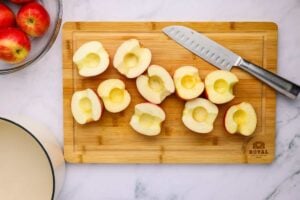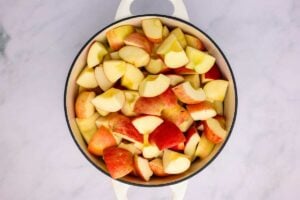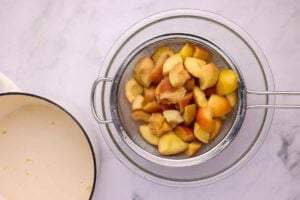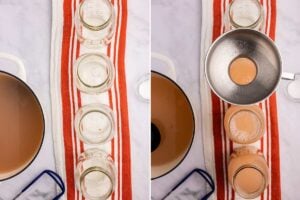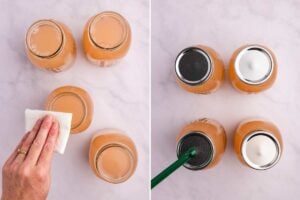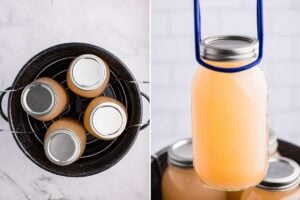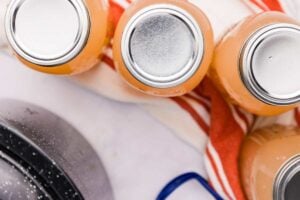Shelf-Stable Canned Apple Juice Recipe
Simple natural apple juice.
Equipment
- Large pot
- Cheesecloth or a fine mesh strainer
- Canning jars with lids and bands (quart size)
- Jar lifter and canning funnel
Ingredients
- 12 pounds of apples to make about 1 gallon of juice
- Water optional, for adjusting juice concentration
- Citric acid or ascorbic acid optional, for preserving color
Instructions
- Prepare Your Apples: Wash your apples thoroughly to remove any dirt or debris. Cut them into quarters, removing the cores and any damaged sections. Peeling is not necessary.
- Cook the Apples: Place the apple quarters in a large pot and add just enough water to cover the bottom of the pot (about 1 inch deep) to prevent sticking and aid in the cooking process. Cook over medium heat, stirring occasionally, until the apples are thoroughly soft and mushy, about 20-25 minutes.
- Strain the Juice: Set a fine mesh strainer or cheesecloth over a large bowl or pot. Pour the cooked apples into the strainer and let the juice drain for at least 3 hours. For clearer juice, avoid pressing or squeezing the apples too hard; simply let the juice drip out. For even clearer juice, you may strain it a second time through a finer mesh or cheesecloth.
- Fill the Jars with Juice: Use a canning funnel to pour the hot apple juice into the sterilized jars, leaving about ¼ inch of headspace. If desired, add ¼ teaspoon of citric acid or ascorbic acid to each quart jar to preserve color.
- Prep Jars: Wipe the rims with a clean cloth to make sure a good seal. Place lids on top and screw rings on the fingertip tight.
- Process the Jars: Place the filled jars in the water bath canner, making sure they are covered by at least 1-2 inches of water. Bring to a rolling boil and process the jars for 10 minutes (adjust processing time for elevations above 1,000 feet).
- Cool and Store: After processing, carefully remove the jars using a jar lifter and place them on a towel or cooling rack to cool for 12-24 hours. Check the seals before labeling and storing the jars in a cool, dark place.
Nutrition
Calories: 708kcal | Carbohydrates: 188g | Protein: 4g | Fat: 2g | Saturated Fat: 0.4g | Polyunsaturated Fat: 1g | Monounsaturated Fat: 0.1g | Sodium: 14mg | Potassium: 1456mg | Fiber: 33g | Sugar: 142g | Vitamin A: 735IU | Vitamin C: 63mg | Calcium: 82mg | Iron: 2mg
Servings: 4 quarts
Calories: 708kcal
